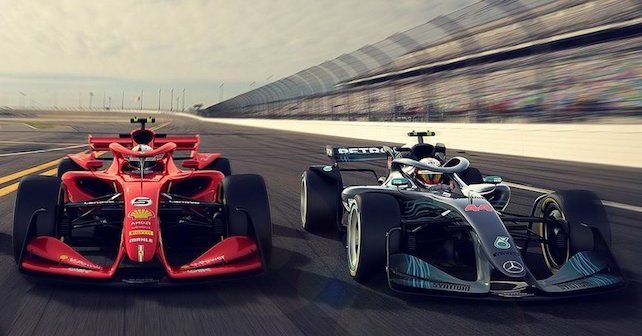Following a leak of one of the concept designs for an F1 car built to the 2021 technical regulations, Formula 1 released all three of its design concepts. Formula 1's managing director for motorsport, Ross Brawn claims that the design overhaul will allow cars to follow each other much closer than now, hence increasing overtaking opportunities.
Brawn admitted that the current design of an F1 car does not allow them to follow each other closely through a corner in order to get close enough to attempt an overtaking maneuver into a braking zone, which is standard operating procedure for road course racing across series.
Instead, since the 2011 season, F1 has had to resort to a stop-gap and artifical solution in the Drag Reduction System (DRS) to allow cars to pass each other on track.
Brawn - a former championship winning technical director with Benetton, Ferrari and later Brawn GP - has openly expressed his desire to rid F1 of such artifice with a fundamental design overhaul that will debut in the 2021 season.
Another year of research and development will follow before a framework for the new regulations will be put in place by the end of 2019, allowing a further period of refinement until the final design is put in place.
One of the most noticeable aspects about the concepts is the lack of the complicated bodywork around the sides of the cars that currently leads to much turbulence in the airflow, thus making it difficult for another car to run close to it.
That is on account of equally intricate designs of the front wing on the current F1 cars that are incredibly sensitive to turbulent or 'dirty' air.
The much cleaner designs of the front and rear wings indicates much greater utilization of the underbody of an F1 car to generate aerodynamic down-force. Other top tier single-seat racing series like the North America-based Indycar Series follows this design philosophy. However, Indycar has only one single chassis supplier, so interpretations of the 2021 rule-book should still lead to some variation on the F1 grid.
By 2021, F1 is also set to enforce a limit on the amount of money a team can spend to design and build a car, forcing teams to spend smarter rather than burn through insane amounts of money. Such an approach means that performance of a team and its drivers are governed more o the amount of money spent rather than being smart or by a driver's talent.



























Write your Comment